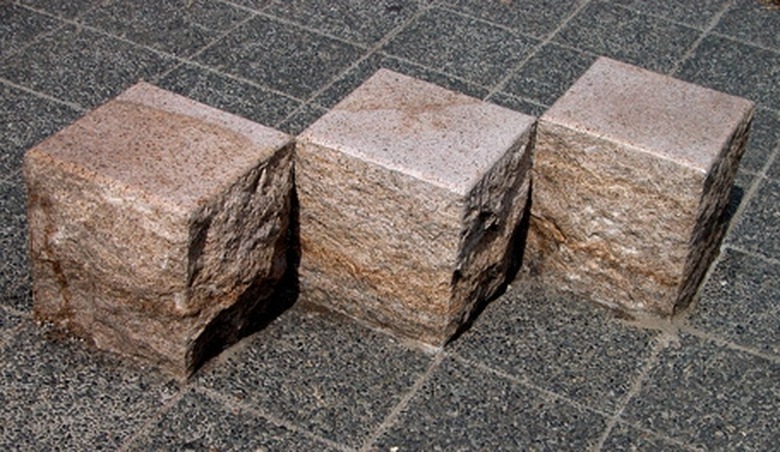How To Calculate Volume From Centimeters
The volumes of many different three-dimensional objects can be calculated using some common mathematical formulas. Calculating the volume of these objects when you have the necessary measurements in centimeters gives a result in centimeters cubed, or cm^3.
Step 1
Calculate the volume of a cube by cubing one side's length in centimeters. A cube is three-dimensional geometric object with six square surfaces. For example, if the length of one side is 5 cm, the volume is 5 x 5 x 5, or 125 cm^3.
Step 2
Calculate the volume of a rectangular object by multiplying the length, width and height together. For example, if the length is 4 cm, the width is 6 cm, and the height is 7.5 cm, the volume is 4 x 6 x 7.5, or 180 cm^3.
Step 3
Calculate the volume of a sphere by cubing the radius, multiplying this number by π or pi and then multiplying that product by 4/3. For example, if the radius is 2 cm, cube 2 cm to get 8 cm^2; multiply 8 by π, to get 25.133; and multiply 25.133 by 4/3 to get 33.51. So, the volume of the sphere is 33.51 cm^3.
Step 4
Calculate the volume of a cylinder by squaring the radius and multiplying it by the height and π. For example, if the radius of the cylinder is 6 cm and its height is 8 cm, 6 squared is 36. 36; multiplying it by 8 results in 288; and 288 multiplied by π equals 904.78. So, the volume of the cylinder is 904.78 cm^3.
Step 5
Calculate the volume of a cone by squaring the radius, multiplying that by the height and π, and divide that product by 3. For example, if the radius is 4 cm and the height is 5 cm, squaring 4 results in 16, and 16 multiplied by 5 is 80. 80 multiplied by π results in 251.33, and 251.33 divided by 3 equals 83.78. The volume of the cone is 83.78 cm^3.
TL;DR (Too Long; Didn't Read)
Volume measurements in cubic centimeters can be changed to milliliters, because the two measurements are equivalent. 1,000 cm^3 equals one liter.
Cite This Article
MLA
Gartneer, Chance E.. "How To Calculate Volume From Centimeters" sciencing.com, https://www.sciencing.com/calculate-volume-centimeters-7840860/. 24 April 2017.
APA
Gartneer, Chance E.. (2017, April 24). How To Calculate Volume From Centimeters. sciencing.com. Retrieved from https://www.sciencing.com/calculate-volume-centimeters-7840860/
Chicago
Gartneer, Chance E.. How To Calculate Volume From Centimeters last modified August 30, 2022. https://www.sciencing.com/calculate-volume-centimeters-7840860/
